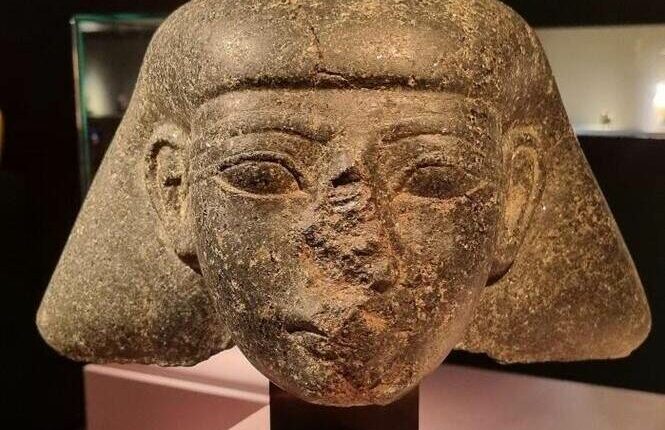The Netherlands has announced plans to return a 3500 Year Old Egyptian Sculpture to Egypt, marking a significant milestone in the country’s long-running effort to reclaim stolen cultural treasures. The limestone bust, believed to depict a senior official from the reign of Pharaoh Thutmose III, was identified after it appeared at an art fair in Maastricht in 2022.
The discovery followed an anonymous tip that prompted a heritage investigation by Dutch authorities. Experts concluded that the sculpture had been looted and smuggled out of Egypt, most likely during the unrest following the 2011 Arab Spring. Once the piece’s origins were confirmed, the dealer in possession of it voluntarily surrendered the artifact.
Dutch Prime Minister Dick Schoof announced the decision during an official visit to Cairo, where he met with Egyptian President Abdel Fattah el-Sisi. Both leaders described the restitution as a step toward greater cultural cooperation and a reflection of shared responsibility for preserving humanity’s heritage. The official handover is expected before the end of the year, when the artifact will be presented to Egypt’s ambassador in The Hague.
SEE ALSO: Huawei HiRE6 Empowers Egyptian Youth with Over 60,000 Certified Job Opportunities
Egyptian officials have celebrated the decision as a symbolic victory, coinciding with the much-anticipated opening of the Grand Egyptian Museum (GEM) in Giza. The museum, which will display over 100,000 artifacts spanning more than seven millennia, stands as one of the largest and most advanced cultural institutions in the world. Authorities say the return of the sculpture underscores Egypt’s growing influence in international restitution efforts and its determination to safeguard its history.
The restitution of the 3500 Year Old Egyptian Sculpture also highlights a broader shift across Europe, where governments and museums are increasingly re-evaluating the origins of their collections. Over the past decade, several high-profile artifacts have been returned to African and Middle Eastern countries as part of a growing movement to address the legacy of colonial-era looting and illicit trade.
For Egypt, this return represents more than just the recovery of an ancient artifact. It signifies international recognition of its rightful ownership and a renewed commitment to protecting cultural identity. Each successful restitution strengthens Egypt’s status as the guardian of one of the world’s oldest civilizations, one that continues to shape the global understanding of art, history, and human heritage.


